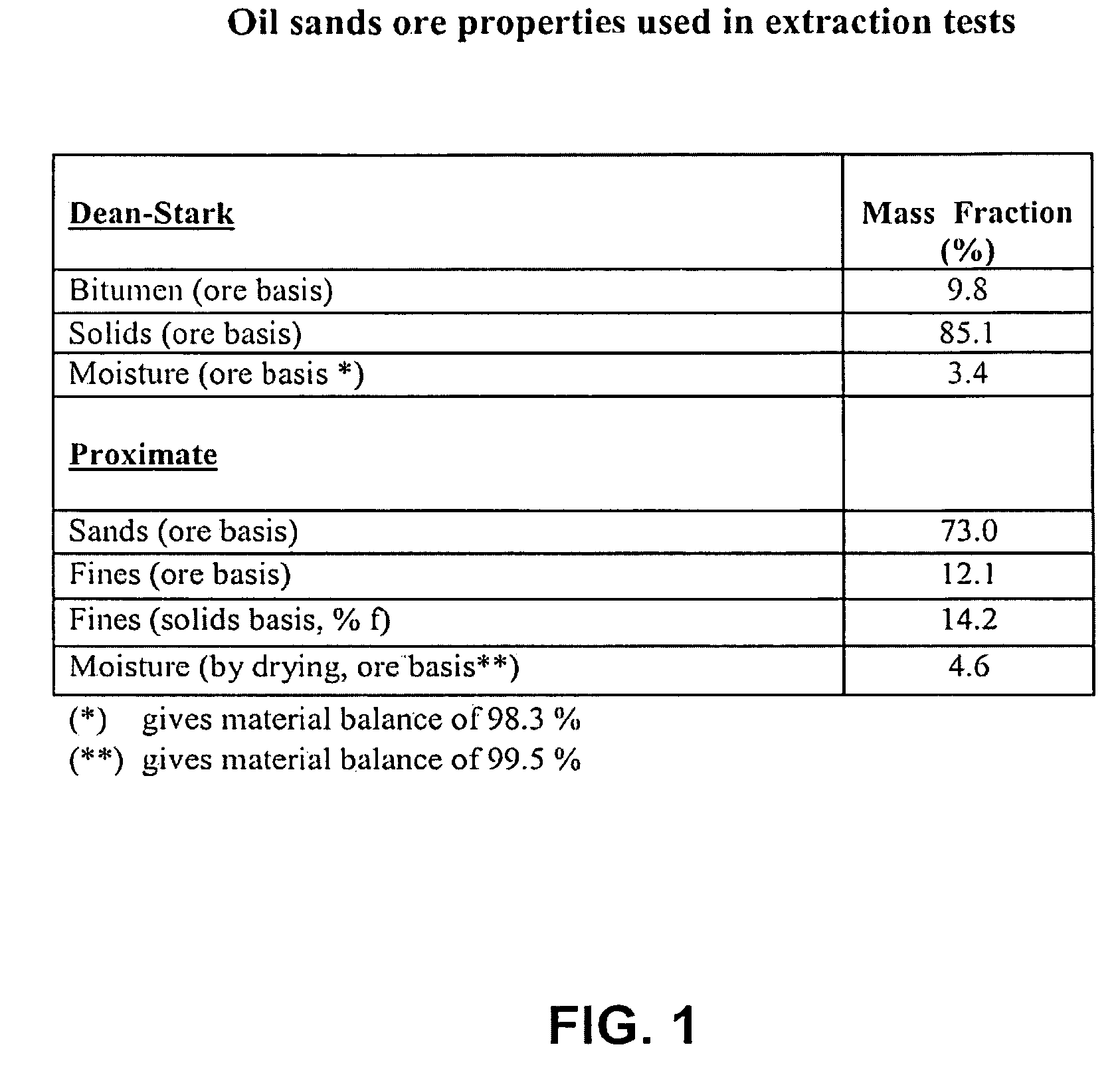Method for extraction of bitumen from oil sands using lime
a technology of oil sands and lime, which is applied in the field of extracting bitumen from oil sands, can solve the problems of preventing the desired interaction between bitumen droplets and air bubbles, and achieve the effects of promoting bitumen liberation, improving or promoting the attachment of bitumen, and promoting clay particle detachmen
- Summary
- Abstract
- Description
- Claims
- Application Information
AI Technical Summary
Benefits of technology
Problems solved by technology
Method used
Image
Examples
Embodiment Construction
[0014]The methods of present invention use CaO lime (or Ca(OH)2) at dosages effective to reduce the attraction between clay particles and bitumen, thereby promoting the detachment of clay particles from bitumen droplets in an oil sands ore-water slurry. The effective dosage of CaO (i.e., Ca(OH)2) addition is the dosage which increases the pH of the oil sands ore-water slurry to about 8 to 9 and provides sufficient Ca2+ ions to promote flocculation of clay particles attached to bitumen droplets in the slurry by the ion-exchange reaction: 2Clay−Na+Ca(OH)2(Clay)2−Ca+2NaOH). The addition of CaO lime into the ore-water slurry causes the pH of the slurry to increase, thus enhancing the water-solubility of asphaltic acids contained in the bitumen. Water-soluble asphaltic acids formed at the bitumen-water interface act as surfactants and reduce or eliminate the activity of Ca2+ and Mg2+ ions binding the clay particles and bitumen together.
[0015]When CaO lime (or Ca(OH)2) is added to the ore...
PUM
| Property | Measurement | Unit |
|---|---|---|
| temperature | aaaaa | aaaaa |
| temperature | aaaaa | aaaaa |
| size | aaaaa | aaaaa |
Abstract
Description
Claims
Application Information
 Login to View More
Login to View More - R&D
- Intellectual Property
- Life Sciences
- Materials
- Tech Scout
- Unparalleled Data Quality
- Higher Quality Content
- 60% Fewer Hallucinations
Browse by: Latest US Patents, China's latest patents, Technical Efficacy Thesaurus, Application Domain, Technology Topic, Popular Technical Reports.
© 2025 PatSnap. All rights reserved.Legal|Privacy policy|Modern Slavery Act Transparency Statement|Sitemap|About US| Contact US: help@patsnap.com



